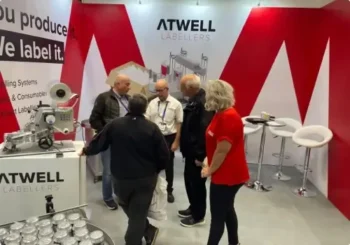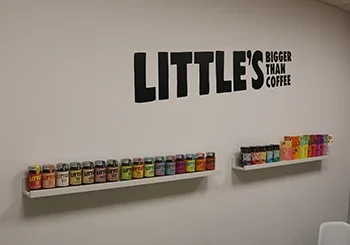Labelling Machinery: Troubleshooting Tips
Labelling machinery plays a vital role in many industries — from food and beverage to pharmaceuticals, cosmetics, and general manufacturing. These machines ensure that labels are applied consistently, accurately, and at high speed. However, like any form of automated equipment, labelling machines can encounter performance issues that interrupt production and affect product quality.
Understanding the most common problems with automatic labelling systems and knowing how to troubleshoot them is key to maintaining a smooth, efficient packaging line. Here, our experts at Atwell Labellers share practical advice for resolving common labelling issues.
Misaligned Labels
Problem:
Labels are not being applied in the correct position, appearing skewed, slanted, or offset.
Causes & Fixes:
- Check Label Alignment Sensors:
Ensure that sensors are clean and properly calibrated. Dust, debris, or misalignment can interfere with label detection and cause incorrect placement. - Inspect Label Roll Alignment:
Confirm the label roll is loaded correctly and aligned with the feed path. Even slight misalignment can affect the label trajectory. - Calibrate the Labelling Head:
Refer to your labelling machine’s manual to adjust the head for correct label positioning. Calibration may need to be repeated periodically.
Label Jams or Tearing
Problem:
Labels get stuck, jammed, or torn during the application process.
Causes & Fixes:
Clear the Path:
Power down the machine and carefully remove any torn labels or obstructions from the label feed area.Adjust Label Roll Tension:
Incorrect tension can cause labels to stretch, tear, or jam. Follow the manufacturer’s guidelines for proper tension settings.Maintain Regularly:
Routine cleaning and labelling equipment maintenance are essential. Lubricate moving parts, check rollers and gears, and replace worn-out components to prevent build-up or breakdowns.
Wrinkled or Folded Labels
Problem:
Labels appear creased, folded, or bubbled on the product surface.
Causes & Fixes:
- Use the Right Label Material:
Make sure you’re using high-quality label stock that is compatible with your machine and product surface. Thinner, low-grade materials may wrinkle easily. - Check Label Application Speed:
High speeds can stretch or distort some materials. Try reducing the speed for better handling and smoother label adhesion. - Control Label Tension:
Modern label applicators often include tension settings. Fine-tuning these can help avoid material warping during application.
Inconsistent Label Adhesion
Problem:
Labels fail to stick properly or begin peeling off after application.
Causes & Fixes:
- Verify Adhesive Compatibility:
The adhesive must suit the surface material and environmental conditions (e.g., temperature, moisture). Consult your label supplier for the right adhesive formulation. - Clean the Product Surface:
Any dust, grease, or condensation on the product can prevent adhesion. Consider using blowers or wipers to clean surfaces prior to labelling. - Adjust Application Pressure:
Insufficient pressure can result in poor label bonding. Some labelling machines allow pressure adjustments — find the setting that gives consistent adhesion without damaging the product.
Inaccurate Label Placement
Problem:
Labels are not being applied to the correct area of the product or container.
Causes & Fixes:
- Inspect Label Sensors:
Sensors may be dirty, misaligned, or malfunctioning. Clean and test all sensors regularly to ensure precise label start points. - Check the Labelling Head Position:
Any deviation or mechanical drift in the labelling head can affect placement. Recalibrate the head using the machine’s diagnostic settings. - Review Software Settings:
Double-check your machine’s label dimensions, offset positions, and speed settings. These parameters must match the specific product format to ensure accurate labelling.
Pro Tip: Preventive Maintenance is Key
Many of the problems outlined above can be avoided through regular labelling machine maintenance. Establish a preventive schedule that includes:
- Cleaning sensors, rollers, and label paths
- Lubricating moving parts
- Replacing worn belts, gears, or printheads
- Verifying calibration and tension settings
- Testing sensors and safety features
By staying proactive, you’ll not only reduce downtime but also extend the life of your equipment and ensure consistent, professional label application.
Need Help With Your Labelling Machine?
Whether you’re dealing with misaligned labels, faulty sensors, or jammed feeds, our team is here to help. Atwell Labellers offers decades of experience in industrial labelling systems, from technical support and maintenance advice to complete labelling line integration.
For more information and advice on labelling machinery, contact us today.


